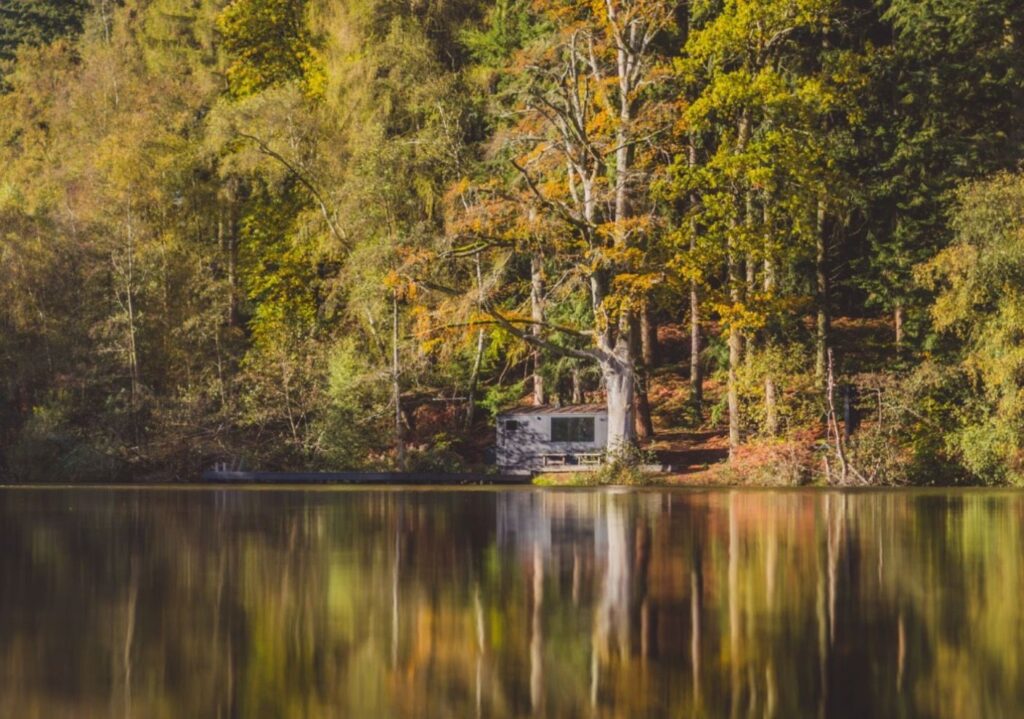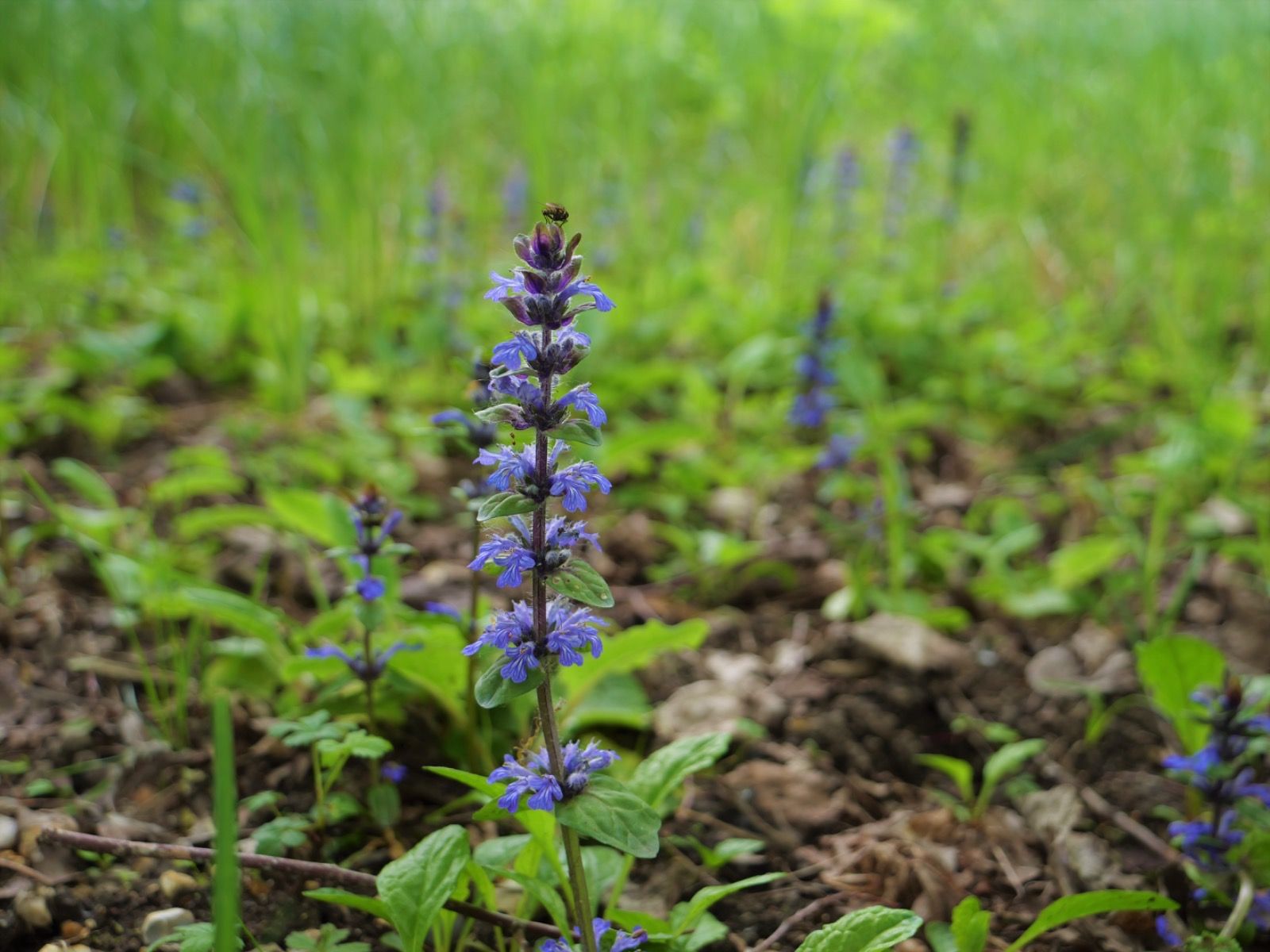
As the weather warms in May, the rise in temperature triggers a mass hatch and metamorphosis of insect larvae into adult insects. The lakes and rivers at Wasing hold phenomenal populations of insects, many of which choose May as the month for their appearance and courtship. Amongst the most exciting of these is the Beautiful Demoiselle, a large damselfly whose iridescent colours catch the spring sunshine as they flutter around footpaths and open glades around the rivers and lakes. The stunning male with his metallic blue body and dark wings and the beautiful iridescent green female with brown wings are surely amongst the most elegant of insects, the equal of any butterfly. Take a pair of binoculars with you to see these beauties close-up as they don’t like too much attention and will only let you get within 10 yards or so before flying off.
The Estate has more than a dozen species of damselfly and dragonfly and these appear from late April right through to the autumn. They prefer sunny days with low wind if you’re going looking for them. Almost every bird and fish species preys on damselflies and dragonflies, and they themselves are predatory insects.
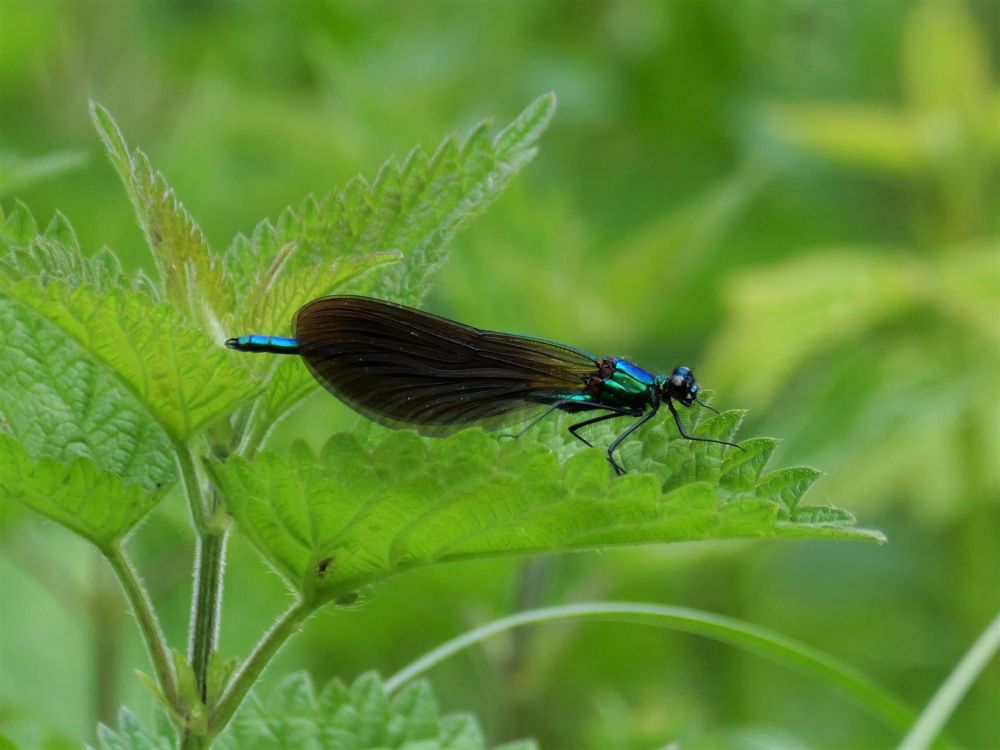
While damselflies and dragonflies spend their larval stage in the water and their adult stage in the air, another important insect that appears at this time of year remains on the water during it’s adult stage. The pond skater is a common insect on our lakes and being another predator represents another important part of the food chain, controlling populations of other insects both aquatic and terrestrial. The adult skater hibernates on dry land under leaf litter in our northern winters, and then appears as a surface-living insect in the spring. The eggs are laid underwater and the nymph goes through numerous stages of development before reaching maturity. Walk around the lakes and rivers in late summer and it is sometimes possible to see vast rafts of pond skaters living communally. Any unfortunate insect stuck in the water is soon set upon by many pond skaters.

The beauty of insects is definitely in the eye of the beholder, and this next spring insect is both beautiful and strangely unpleasant. The red-headed cardinal beetle is another predator that appears around our lakes and rivers in spring, and although its life cycle is not directly associated with water, the adults spend an unusual amount of time near water often basking on waterside vegetation. It is often mistaken for the invasive alien red lily beetle, but the red lily beetle is a herbivore (eating garden lilies and fritillaries) while the cardinal beetle is a predator. The antennae of the cardinal beetle have deeply notched serrations, while the red lily beetle has mere indentations on its antennae. The red lily beetle has bright shiny blood red wing cases covered in tiny dimples, while the cardinal has a slightly less vibrant red/orange colour with no dimples on it’s wing cases.
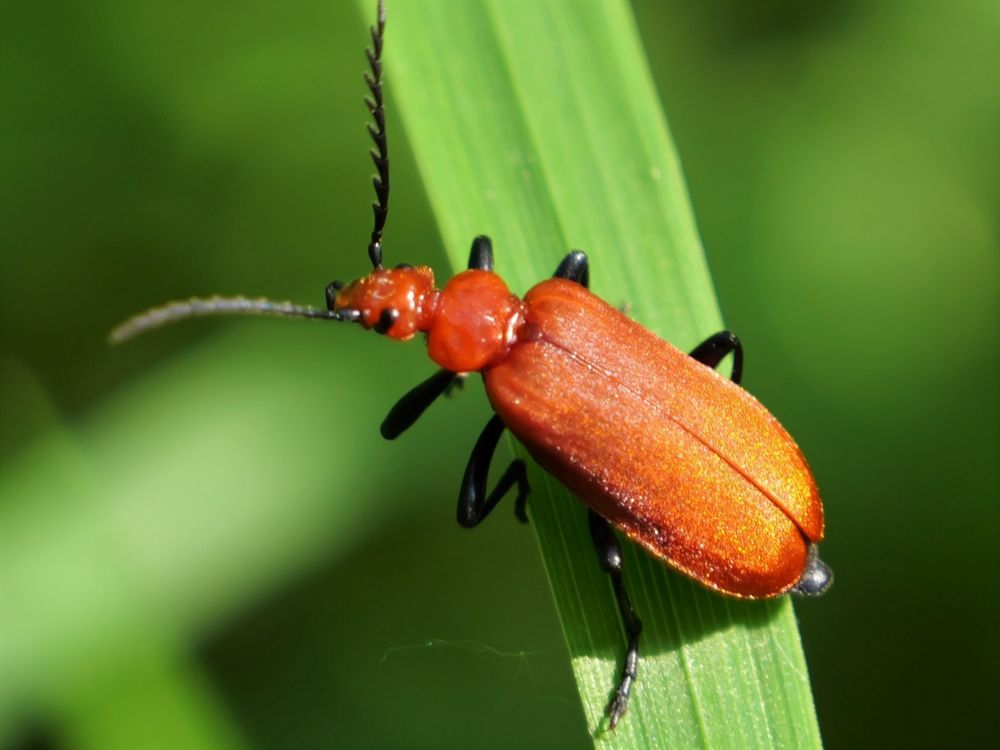
May is not all about insects around the lakes and rivers, there are many beautiful plants coming into flower around the Estate. One of my favourite plants to flower in May is common bugle, a delightful little gem that grows best in the damp ground under alder trees and alongside the footpaths around our lakes and rivers. It is a favourite nectar source for bees and other insects and it just looks wonderful in little armies of blue spikes even though they are only a few inches tall.
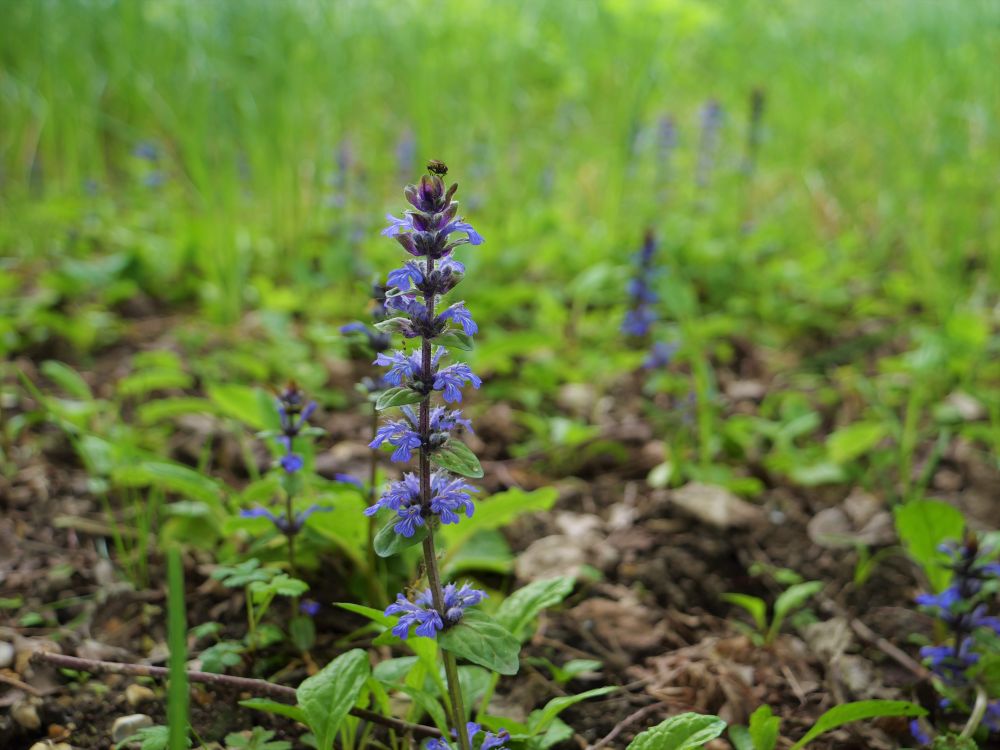
Next month is flaming June when the lakes and rivers are alive with millions of insects and birds, the vegetation is at it’s lushest and many of the Estate’s fish are thinking about nothing but courtship!
– Jock the Wasing Bailiff









